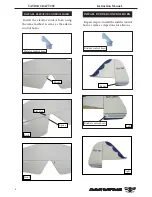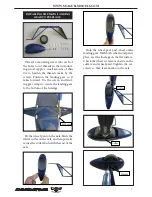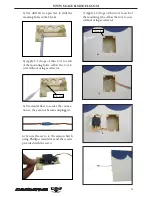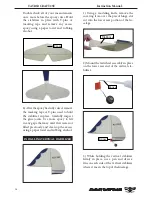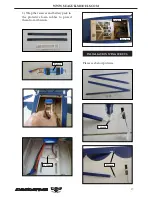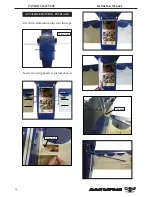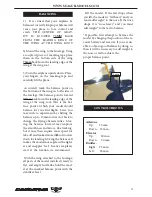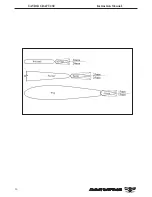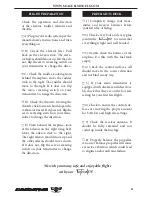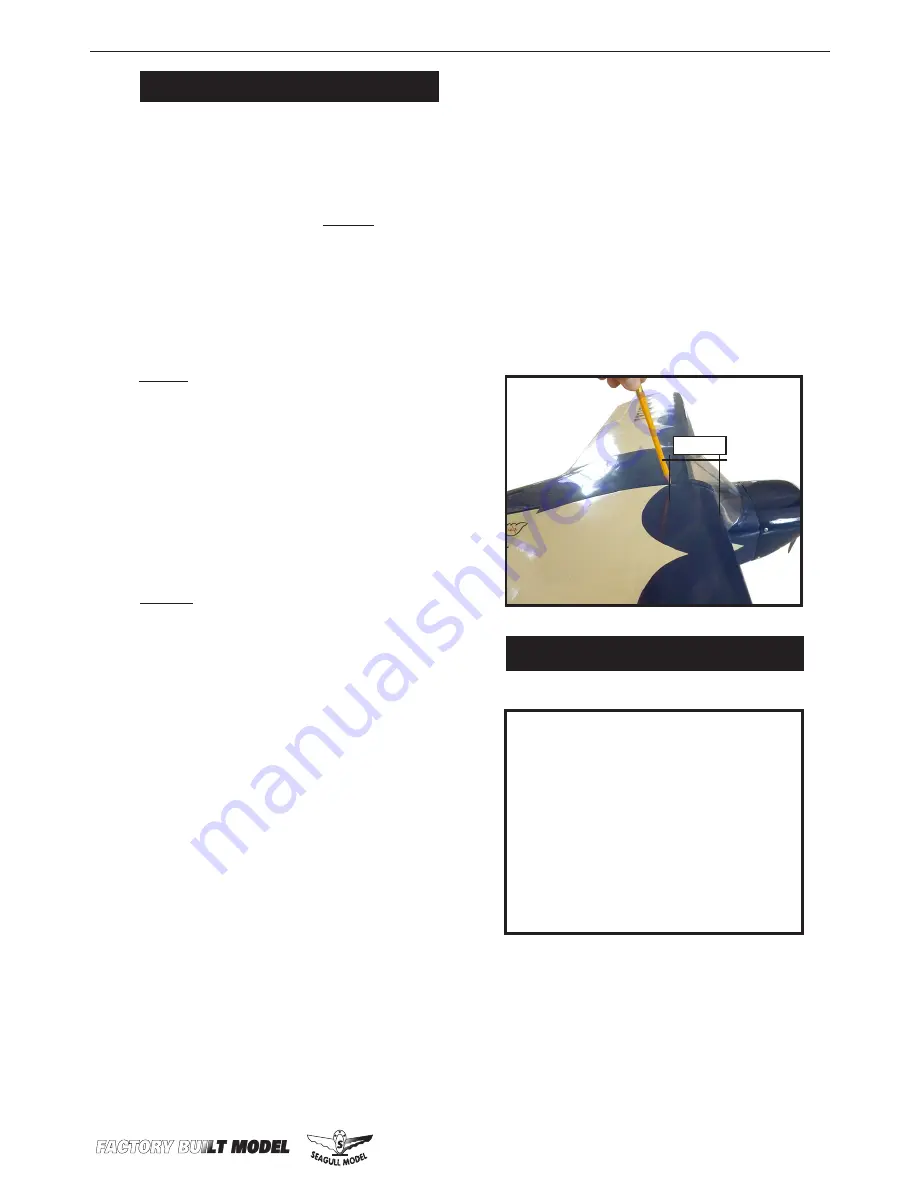
WWW.SEAGULLMODELS.COM
19
BALANCING.
1) It is critical that your airplane be
balanced correctly. Improper balance will
cause your plane to lose control and
crash. THE CENTER OF GRAV-
ITY IS LOCATED
75MM
BACK
FROM THE LEADING EDGE OF
THE WING AT THE WING ROOT.
3) Turn the airplane upside down. Place
your fingers on the masking tape and
carefully lift the plane .
Accurately mark the balance point on
the botttom of the wing on both sides of
the fuselage. The balance point is located
75mm
back from the leading edge of the
wing at the wing root. This is the bal-
ance point at which your model should
balance for your first flights. Later, you
may wish to experiment by shifting the
balance up to 10mm forward or back to
change the flying characteristics. Mov-
ing the balance forward may improve
the smoothness and arrow- like tracking,
but it may then require more speed for
take off and make it more difficult to slow
down for landing. Moving the balance aft
makes the model more agile with a light-
er and snappier ”feel”. In any case,please
start at the location we recommend .
With the wing attached to the fuselage,
all parts of the model installed ( ready to
fly), and empty fuel tanks, hold the mod-
el at the marked balance point with the
stabilizer level.
2) Mount the wing to the fuselage. Using
a couple of pieces of masking tape, place
them on the bottom side of the wing
75mm
back from the leading edge of the
wing at the wing root.
Lift the model. If the tail drops when
you lift, the model is “tail heavy” and you
must add weight* to the nose. If the nose
drops, it is “nose heavy” and you must
add weight* to the tail to balance.
*If possible, first attempt to balance the
model by changing the position of the re-
ceiver battery and receiver. If you are un-
able to obtain good balance by doing so,
then it will be necessary to add weight to
the nose or tail to achieve the
proper balance point.
75 mm
CONTROL THROWS.
Ailerons:
Up : 15 mm
Down : 15 mm
Elevator:
Up : 20 mm
Down : 20 mm
Rudder:
Right : 25 mm
Left : 25 mm


